
Children have a nuanced understanding of reality, as evidenced by their acceptance of figures like Santa Claus, which is heavily influenced by cultural rituals, according to research.
Young children understand dinosaurs and The Wiggles are (or were!) real, and that fictional characters like Peter Pan and Spongebob are not real — but cultural figures like Santa or the Tooth Fairy occupy an ambiguous place in a child’s pantheon, suggests a study published June 17, 2020 in the open-access journal PLOS ONE by Rohan Kapitány from Keele University, and colleagues.
Children as young as three are capable of understanding the difference between “real” and “non-real.” However, there’s little research into how children evaluate different types of non-real people or figures relative to one another, as well as in comparison to real people.
In order to better understand children’s beliefs, Kapitány, and colleagues asked 176 Australian children two to eleven years old to rate how real they considered thirteen different figures (ranging from real people like The Wiggles to more ambiguous figures like Santa Claus, ghosts, and dinosaurs, as well as fictional characters like Spongebob Squarepants and Princess Elsa) using a zero (not at all real) to eight (extremely real) point Likert scale. The authors hypothesized that their results might show a hierarchy between real and unreal, with some unreal figures perceived as more real by children depending on indirect evidence or cultural rituals at play — like setting out milk and cookies for Santa that have “vanished” by Christmas morning. For comparison, they also assessed 56 adults.
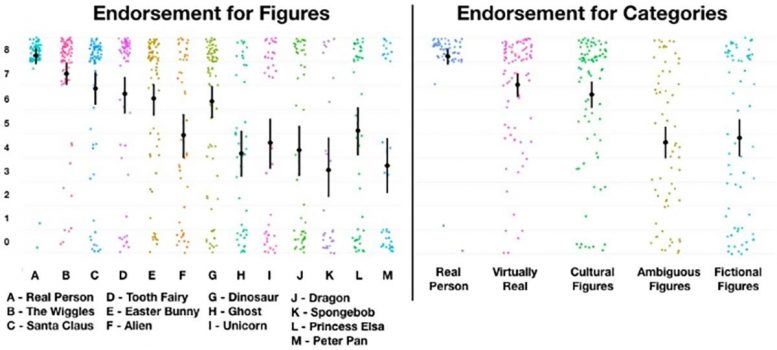
Children’s endorsement scores for individual figures and categories. Credit: Kapitány et al, 2020 (PLOS ONE, CC BY)
The data suggested the majority of children conceptualized the thirteen figures into four groups, based on score endorsements: ranked most highly as “real” were figures like dinosaurs and The Wiggles (with a score of 7 points); the next-highest score went to cultural figures like Santa and the Tooth Fairy (6 points), followed by ambiguous figures like aliens, dragons, and ghosts (4 points) and fictional characters like Peter Pan, Spongebob, and Elsa (4 points). In comparison, adults (and older children, from seven years up) tended to group figures into three groups: real, not-real, and ambiguous (ghosts and aliens).
Although this study is limited in that there was no standard definition of “real” provided to the participants (which may have had an impact in cases where children might have “met” figures in costume — for instance, approximately 40 percent of the surveyed children said they’d seen Santa in real life, the same proportion who said they’d seen The Wiggles in real life), the relatively high belief in cultural figures among younger children remains notable. The authors plan future work to understand how ritual participation and other factors lead children to understand what is real (or not real) in their world, particularly when children might have no direct relevant experience.
The authors add: “What we show is that children tend to have a nuanced understanding of reality, more so than many expect, and we show it across a ‘pantheon’ of figures who naturally vary in their degree of ‘reality’ and cultural support. We argue that rituals are a particularly potent signal for kids when it comes to accepting things like Santa Claus as real.”
Reference: “The child’s pantheon: Children’s hierarchical belief structure in real and non-real figures” by Rohan Kapitány, Nicole Nelson, Emily R. R. Burdett and Thalia R. Goldstein, 17 June 2020, PLoS ONE.
DOI: 10.1371/journal.pone.0234142
Funding: This research was supported by funding from Horizon 2020 Excellent Science Grant provided by the ERC (Ritual Modes, No. 694986).



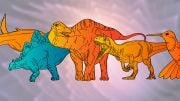

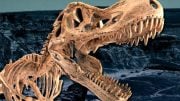
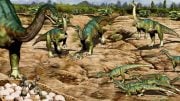
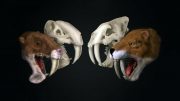

Be the first to comment on "Is Santa Real? Examining Children’s Beliefs in Cultural Figures From the Tooth Fairy to SpongeBob"